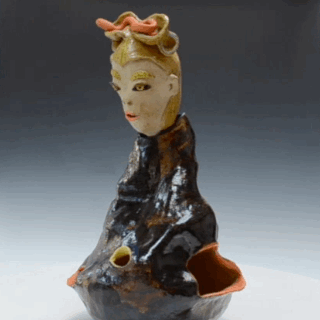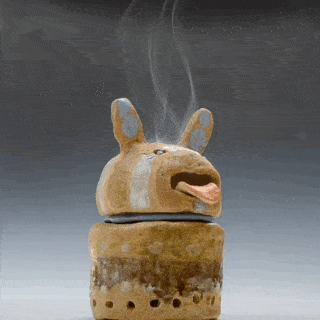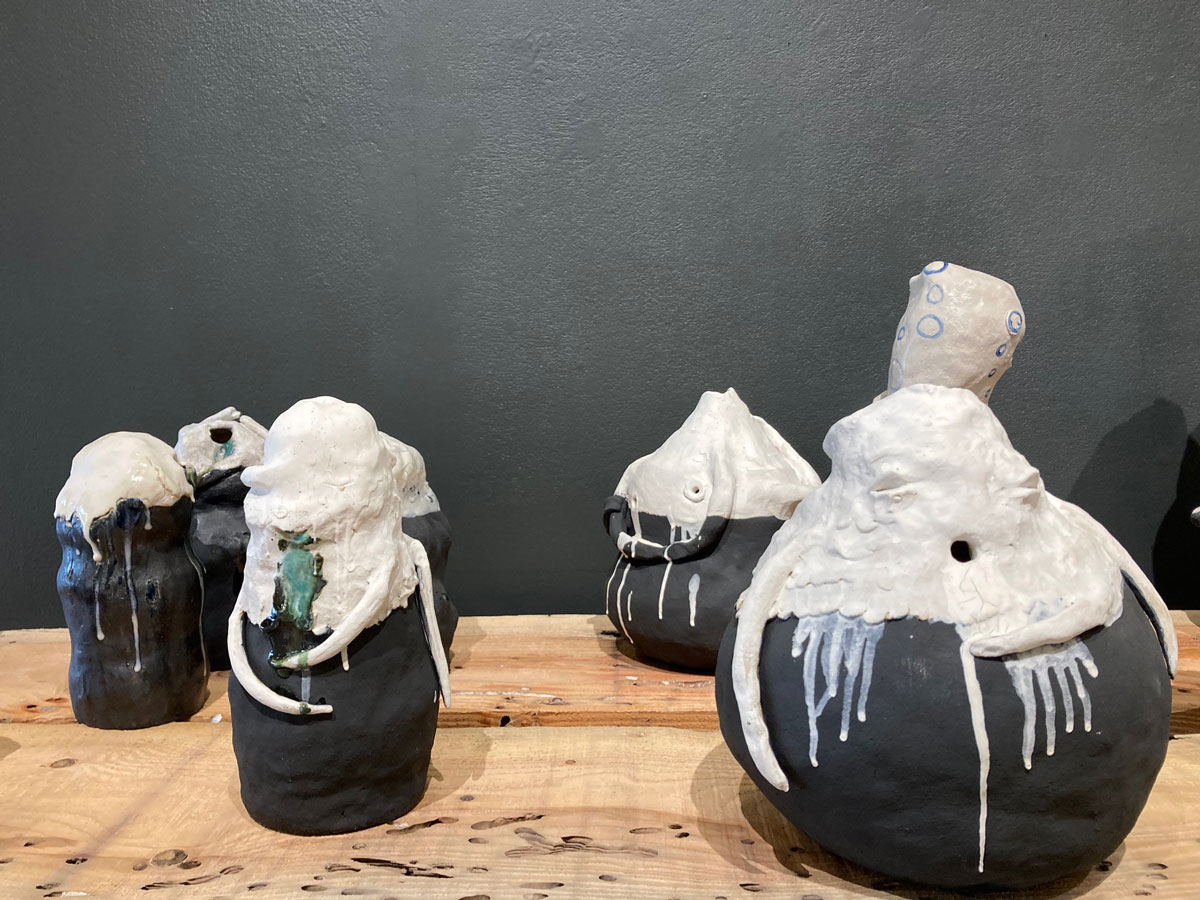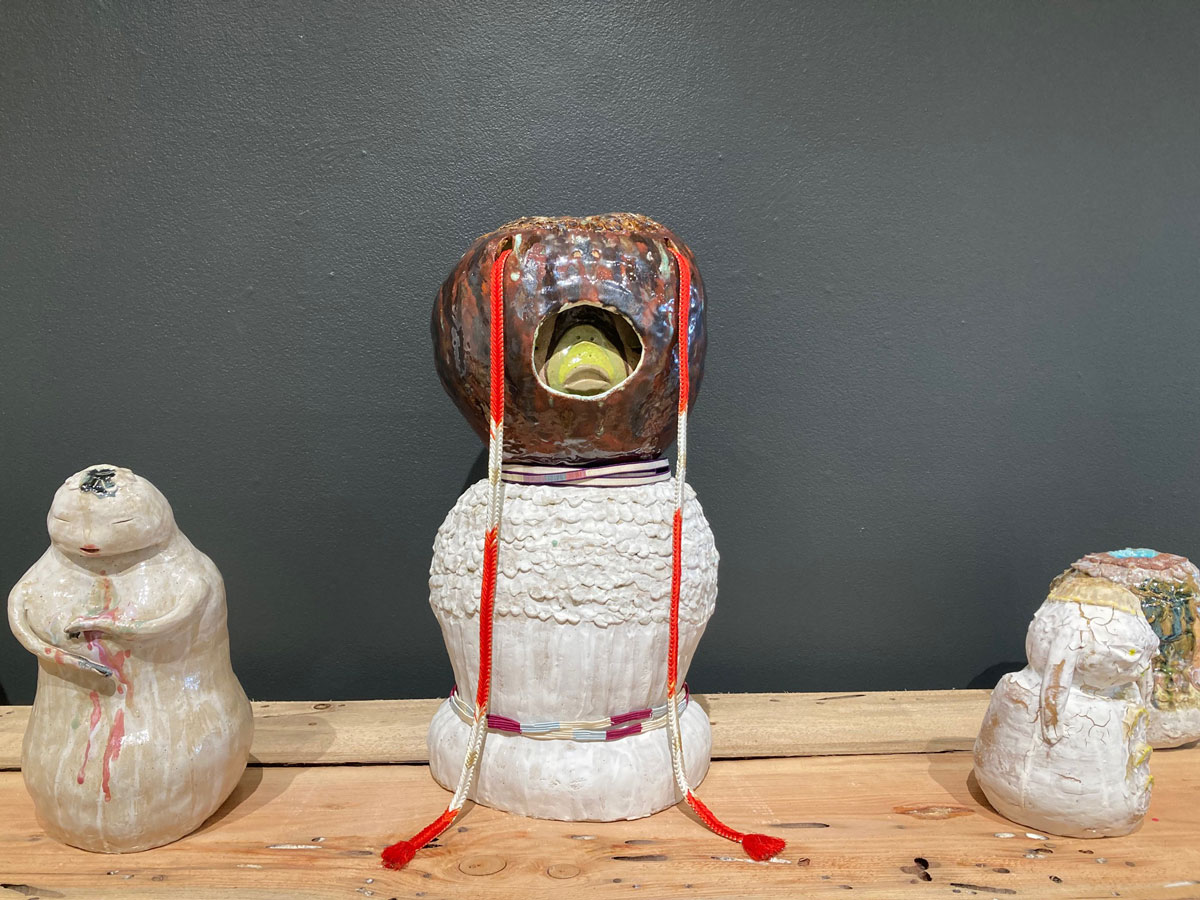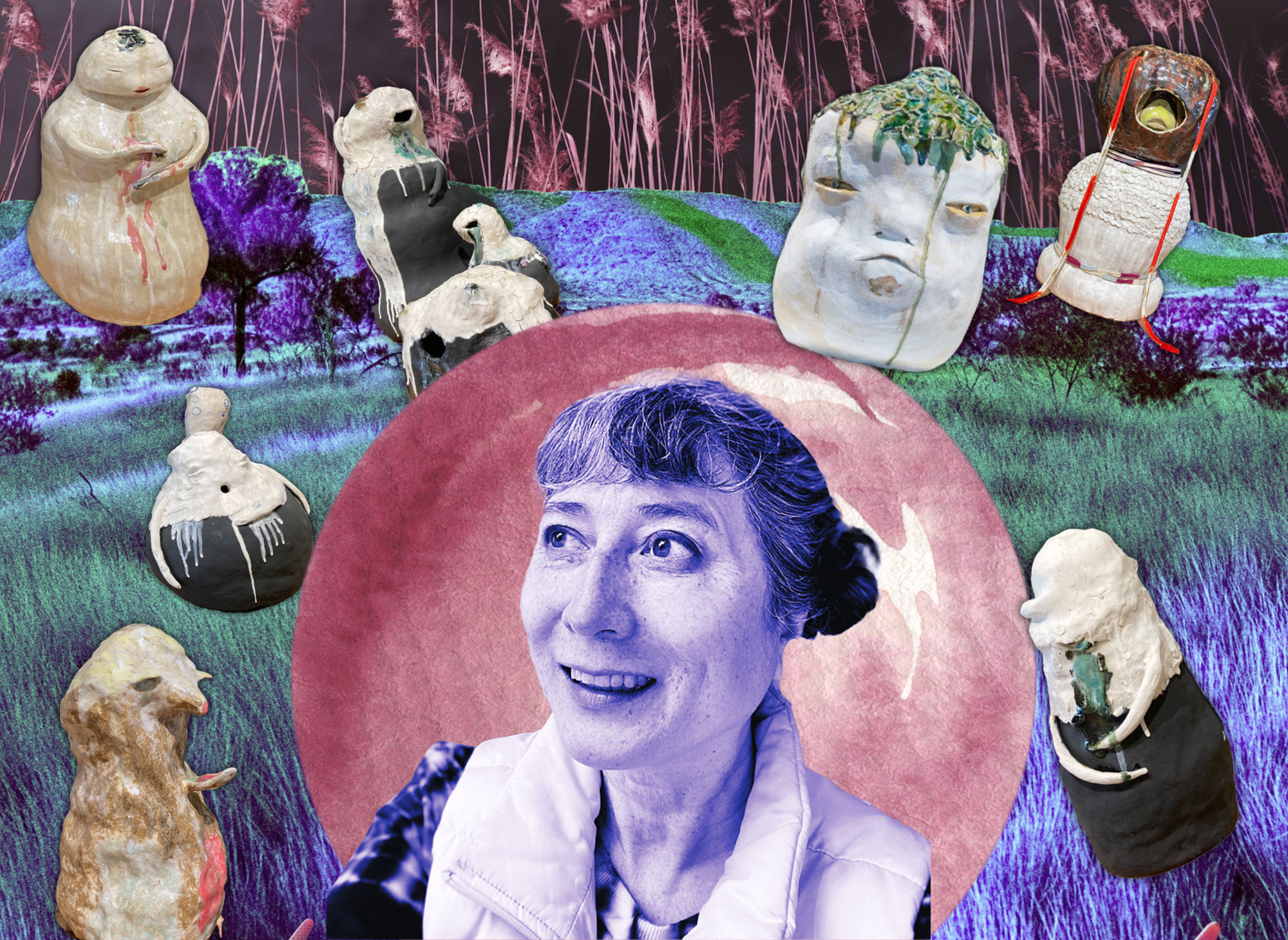
Thermal creatures Thermal creatures Thermal creatures
Saya Moriyasu, ’91, imagines magical mineral spirits in paper and clay.
Photos and text by Shin Yu Pai | GIFs by Saya Moriyasu | March 15, 2024
Saya Moriyasu’s new show conjures the anthropomorphic spirits that frequent Hayao Miyazaki’s bathhouse in the Japanese animated film “Spirited Away” and the cute, grumpy children of Yoshitomo Nara’s paintings. Her new exhibition at the J. Rinehart Gallery, “Ozekitachi 尾石達- Stone Tails,” is inspired by the artist’s experiences at the mineral hot springs in Jemez Springs, New Mexico, while at an artist’s residency program at Mission Street Arts.
Moved by the mountain surroundings, Moriyasu initially created a series on paper in sumi ink and walnut ink drawings. When she returned to her home studio in the Beacon Hill neighborhood of Seattle, she began sculpting the three-dimensional clay figures that populate her new exhibition. Based on Japanese Shinto spirits, or kami, the creatures of Moriyasu’s imagination emerge from the mud of mineral baths in various forms. Evoking minerals through the materiality of the clay, some pieces are painted over to expose crusted layers of color and glaze that sparkle like geodes and suggest something mysterious cracked open. “Some are really crude,” she says. “Are those arms or ears? They’re just evolving. Others are more evolved. Some have emerged.”
Above: Moriyasu’s work from a similarly strange and compelling 2021 exhibit, “spooky actions at a distance.”
Many of the figures cluster on pocked, rustic wooden boards and tabletops that Moriyasu created for their display. “I came from an installation background in school,” she says. “I wouldn’t want these on their own pedestal—they’re a grouping, and that’s important.” At home in her studio, she arranges the vessels next to one another and studies them to consider how she can develop and push her ideas. “I want to push the drippiness. Give more attention to the glazes,” she says. “They’re iterations evolving over time, an evolution of their own making.”
Moriyasu embellishes several of her ceramic figures with cord-like materials or traditional kimono ties. Suggestive of Japanese “shimenawa” hemp ropes used in Shinto ritual—the artist dresses up key clay figures to signal that they are worth an extra moment of regard. She invites the viewer to consider “What is the moment when a thing becomes a god?”
Born in the Pacific Northwest, Moriyasu spent the early part of her life traveling with her family to hot springs in Oregon. As a 15-year-old exchange student in Japan, she also explored hot springs culture. As an adult, she developed a connection to Central Washington, Soap Lake and the shrubsteppe ecosystem. Moriyasu has researched mineral lakes around the world and volunteers with the Soap Lake Conservancy. “They have the second highest concentration of minerals in the world,” she says.
“I remember climbing on the roof and hanging a rope through the vent to hang a sculpture in the gallery.”
Saya Moriyasu
At the UW, Moriyasu pursued three majors: business administration, art and fine arts (ceramics). “I got the business degree because my dad is Japanese,” she says, with a wink toward him wanting her to pursue a “practical major.” “My father was an artist and an engineer.” Her business background helped her to land part-time jobs in a law firm and engineering firm to help pay her bills. But she has also landed art commissions with clients like Meta. Still, when it comes to her artmaking, business doesn’t really come into play. “To do art, you have to forget about business,” she says. “If you want to make money, spending time making art is not how you make money. I don’t make a cost-benefit analysis. I want to do what I want to do.”
- Work from Saya Moriyasu’s exhibit “Ozekitachi 尾石達- Stone Tails” at the J. Rinehart Gallery. Photo by Shin Yu Pai.
- Work from Saya Moriyasu’s exhibit “Ozekitachi 尾石達- Stone Tails” at the J. Rinehart Gallery. Photo by Shin Yu Pai.
- Work from Saya Moriyasu’s exhibit “Ozekitachi 尾石達- Stone Tails” at the J. Rinehart Gallery. Photo by Shin Yu Pai.
As a ceramics student, Moriyasu worked in the Ceramics + Metal Arts Building near the recreation fields below campus. The program has a gallery in the middle of the building where students can participate in regular shows. “It was an odd-shaped room with a glass case on one end,” says Moriyasu. “I remember climbing on the roof and hanging a rope through the vent to hang a sculpture in the gallery. We really had free rein.”
Thinking back on her early days as an undergraduate, Moriyasu remembers the challenges of firing ceramics in a kiln. “I blew up everything all the time,” she says. “I thought that was part of it. I wouldn’t dry things enough or I would make things too thick. Then I found some clay formulations that worked really well. There’s a lot of surprise, but not as many mishaps with this show. The clay bodies were forgiving.”
“Ozekitachi” is on display at J. Rinehart Gallery through March 27.
